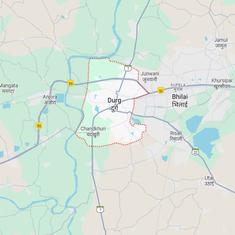Chinese brands may have flooded India’s smartphone market, but across the border, in Bangladesh, local brands have found steadfast loyalists.
The overall smartphone market in Bangladesh grew 45% year-on-year in January-March 2019 on the back of an “increase in the availability of locally manufactured devices,” Counterpoint Research said in a report on May 30.
Sales of made-in-Bangladesh devices increased 29% quarter-on-quarter to comprise 41% of Bangladesh’s smartphone market, data from the Hong Kong-headquartered firm shows.
“Prices of locally assembled devices are lower than those of the imported ones,” said Abhishek Choudhary, research associate at Counterpoint. “Also, the defect ratio of the latest locally manufactured devices has also come down sharply in comparison to the earlier ones.”
One local brand called Maximus, for instance, posted a nearly eight times year-on-year volume growth in the March quarter, driven by affordable offerings in the $25-$75 (Rs 1,744-Rs 5,232) price band.

Symphony and Walton, two out of the top five smartphone brands in the country in the first quarter of 2019, were homegrown. In comparison, no domestic brands made it to India’s top five smartphones.
However, this doesn’t mean the threat of foreign brands isn’t looming in Bangladesh. South Korean phone-maker Samsung’s shipments, for instance, more than tripled year-on-year in January-March, helping it clinch the top spot for the first time in Bangladesh. It beat out former market leader Symphony by eight percentage points.
“New launches and a boost in local manufacturing were the reasons behind Samsung’s growth,” Counterpoint noted. “Expanding its portfolio also helped Samsung, as the newly introduced A-series smartphones dominated in their respective price bands.”

Foreign brands, local interests
In India, the world’s second-largest smartphone market, Chinese players have stifled once-popular domestic brands like Micromax and Lava. Now, their presence is starting to be felt in Bangladesh, too.
Players like Huawei, Xiaomi, Oppo and Vivo, helped the volume of Chinese smartphone shipments in Bangladesh grow 38% between the first quarters of 2018 and 2019, capturing a third of the overall market share.
Like the Make in India initiative, Bangladesh’s government, too, incentivises manufacturers to set up units locally. Currently, a 32% duty is levied on handset imports. But the taxes drop significantly for local assembly (18%) and manufacturing (13%).
Consequently, handset imports in Bangladesh plummeted 21% between 2017 and 2018 and more brands are trying to reap the benefits of going local.
Chinese firm Transsion’s plant in Gazipur, near Dhaka, for instance, assembles about 350,000 units handsets a month. “As it scales up its local assembling, Transsion is looking forward to grow its market share with multiple brand strategy (iTel, Tecno and Infinix),” Counterpoint said.
Symphony set up a plant in Ashulia, a suburb of Dhaka, with the target of churning out 500,000 phones each month. It also plans to open a second plant in Gazipur this year. Meanwhile, Samsung has reportedly been passing a 15% price benefit to customers for the models assembled at its local plant in Narsingdi.
This article first appeared on Quartz.










